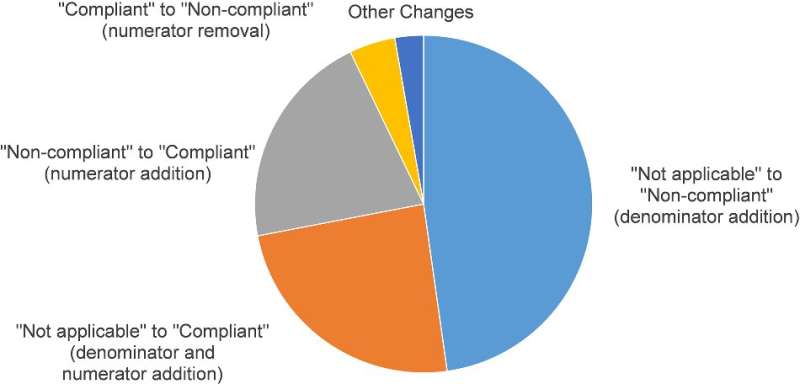Strength in numbers shown in ambulatory care metrics

The difference made to health care quality measurement by voluntary data sharing across a region's health systems and ambulatory care practices is examined in the Journal of the American Medical Informatics Association by Adam Wright, Ph.D., and colleagues.
The team studied 14 ambulatory care metrics at 53 health care organizations participating in the Kansas Health Information Network, a health information exchange (HIE) operating in part as a multisource registry for quality measurement. With reference to 5,295 patients, the team contrasted quality calculations using data from a single electronic health record with calculations using data from the whole network.
During 2018, 79% of these 5,295 patients received care at more than one network facility. Some 15% of all quality measure calculations changed when including HIE data sources, affecting 19% of patients. The changes were observed across measures and organizations.
Beside their use in directing quality and safety improvement, outcome metrics increasingly figure in payment for health care services, the authors note.
More information: John D D'Amore et al. Clinical data sharing improves quality measurement and patient safety, Journal of the American Medical Informatics Association (2021). DOI: 10.1093/jamia/ocab039



















